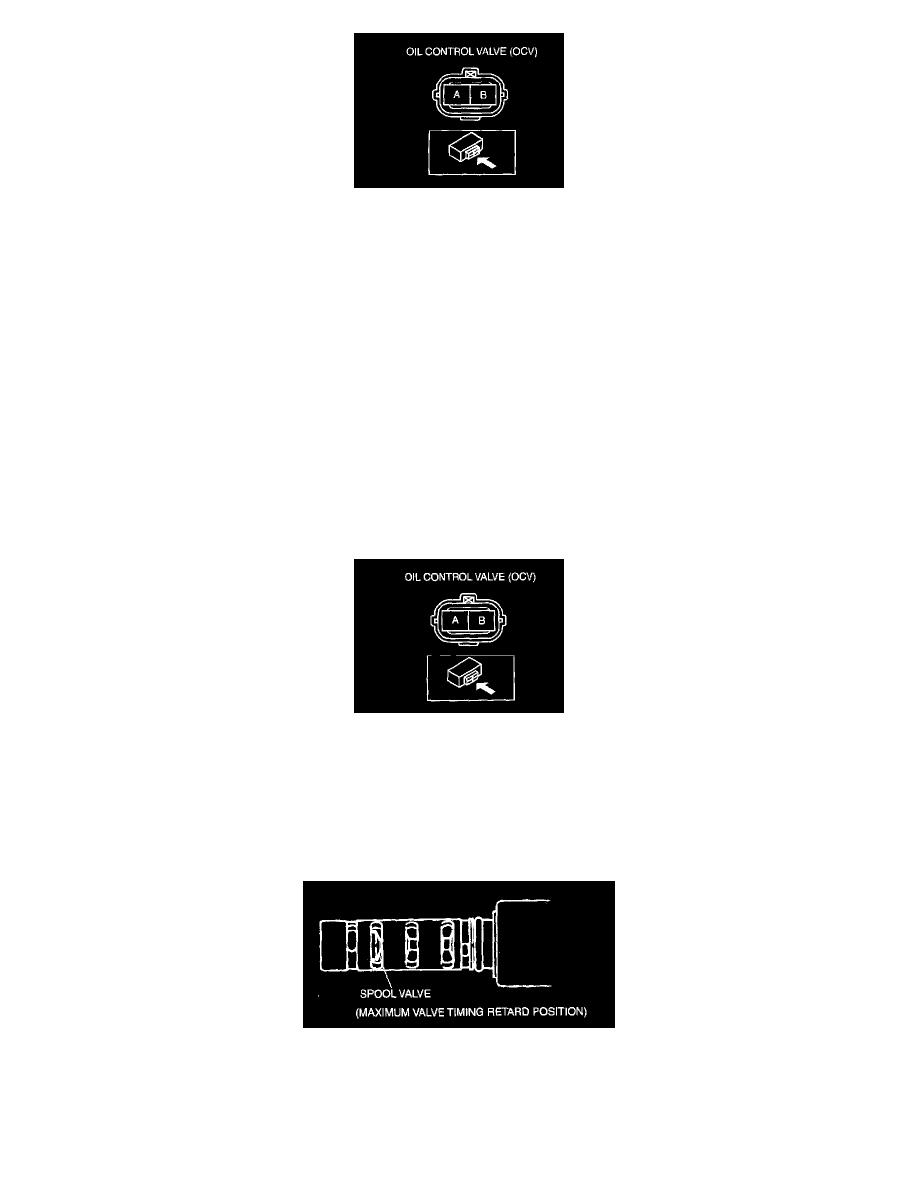Mazdaspeed6 L4-2.3L Turbo (2006)

1. Disconnect the OCV connector.
2. Start the engine and idle it.
3. When applying battery positive voltage between the oil control valve terminals, verify if the engine rough idles or stalls.
^
If it idles roughly or stalls, verify the timing chain assembly (valve timing).
^
If it does not idle roughly or stall, perform the following inspection.
Note:
^
When applying battery positive voltage between the oil control valve terminals, the connection of the positive and negative cables can be
either terminal A or B.
1) Inspect OCV operation.
2) Inspect the harnesses and connectors between the OCV and PCM for a disconnection and short circuit.
3) Inspect the hydraulic passage for leakage.
Hydraulic passage
Between the oil pressure, switch and the OCV
Between the OCV and the camshaft
Oil passage inside the camshaft
4) If the inspected parts are normal, replace the variable valve timing actuator.
Coil Resistance Inspection
1. Disconnect the negative battery cable.
2. Disconnect the OCV connector.
3. Measure the coil resistance between terminals A and B using a tester.
^
If it is not within the specification, replace the 0CV.
Oil control valve resistance 6.9 - 7.9 ohms [20°C (68°F)]
4. Connect the OCV connector.
Spool Valve Operation Inspection
1. Disconnect the negative battery cable.
2. Remove the OCV.
3. Verify that the spool valve inside the OCV is at the maximum valve timing retard position as shown in the figure.
^
If there is any malfunction, replace the OCV.
4. Verify that the battery is completely charged.
